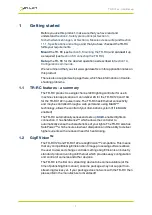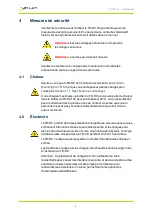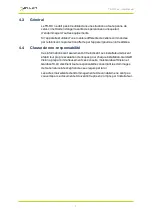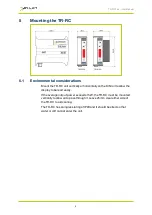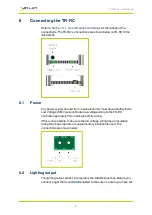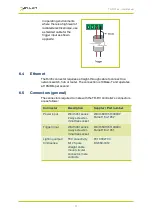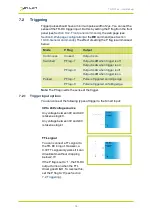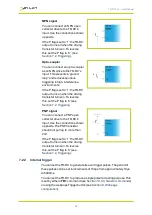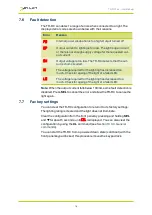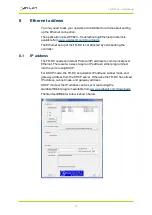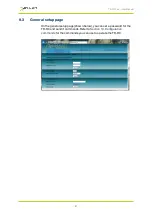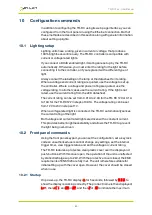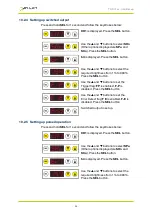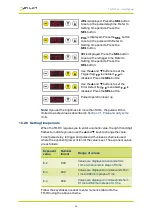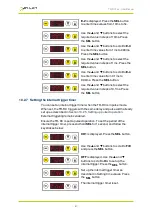
TR-RC1xx - User Manual
7
General description
Three modes of operation are provided for the light output:
Continuous
– the output is constant, but variable between 0% and 100%
in steps of 0.1%.
Pulse
(strobe) – the output is pulsed once per trigger. The delay from
trigger to pulse, the pulse duration and the brightness can all be set.
Switched
– the trigger input can be used to switch the output current on
and off.
The set-up is non-volatile, so the TR-RC resumes the same operation after
a power cycle.
7.1
Pulse and duty cycle limits
The output is off by default. Upon being triggered, the TR-RC pulses to the
output after a delay. The delay, pulse width, re-trigger delay, and pulse
intensity are all configurable (see
Section 10, Configuration commands
).
In pulse and switched modes, the brightness can be set up to 1000% of its
rating for short periods and low duty cycles. To avoid damage to the
lighting, the TR-RC limits the duty cycle by ignoring triggers that are too
soon after the previous trigger. The maximum pulse width and duty cycles
are shown below:
Output brightness
Maximum
pulse
width
Maximum
duty
cycle
0 to 100%
100ms
100%
101% to 200%
30ms
30%
201% to 300%
10ms
20%
301% to 500%
2ms
10%
501% to 1000%
1ms
5%
So for example, if the brightness is set to 250%, then the TR-RC does not
allow pulses greater than 10ms long. With 10ms pulses, any trigger
occurring within the next 50ms is ignored as the duty cycle would be
greater than 20%.
The TR-RC120 pulsed current cannot exceed 2A, so for a lighting rating of
0.2A, 1000% brightness is possible. For 0.5A lighting rating the maximum
brightness is 400%.
Similarly, the TR-RC122 pulsed current cannot exceed 10A, so for a
lighting rating of 1.0A, 1000% brightness is possible. For 2.5A lighting
rating the maximum brightness is 400%.
—
12
—




